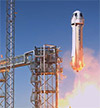Critical Location Decision Factor #10: Union Activity Can Be a Deal Breaker
In order to be able to keep wages in check and maintain a flexible operating environment, many companies put low union profile high on their list of site selection priorities.
Q4 / Fall 2013
Much has been written about the declining influence of labor unions in the United States, and it would not be terribly surprising to see union-related factors drop in relative importance as time goes on. For now, 73.5 percent of the respondents to the Area Development 2012 Corporate Survey list low union profile as either “very important” or “important,” but that’s down several points from the year before.
Check stats from the U.S. Bureau of Labor Statistics and it’s easy to see why. In 2012, 11.3 percent of employees were union members, down half a percent from just a year earlier. Two decades ago, that figure was about 20 percent.
But union profile is certainly not a moot point just yet, and in fact is a big part of a site’s labor considerations, says Rich Thompson, managing director and leader of the Supply Chain and Logistics Solutions practice at Jones Lang LaSalle. “It’s probably the very first filter from a labor perspective,” Thompson notes.
“For manufacturing, it’s near the top of the list,” Larry Gigerich, managing partner with Ginovus in Indianapolis, says of low union profile as a location factor. “We’ve seen it a little more on the logistics and warehouse side as well.”
“From a distribution standpoint it usually is a factor, if it’s a fairly decent-sized facility,” Thompson agrees. “But there are certain markets when you can’t get around it.”
Perceived Activity
When it comes to how the union question plays a role in decision-making, “Number one, you start with perceptions,” Gigerich says. But it’s also important to take a closer look at unionization activity to get a sense of how things are trending.
As for where things are at present, “all states in the Middle Atlantic and Pacific divisions reported union membership rates above the national average, and all states in the East-South-Central and West-South-Central divisions had rates below it,” according to the latest unionization report from the BLS. South Carolina, Arkansas, and North Carolina had the lowest rates of union membership, while New York, Alaska, and Hawaii were at the high end of the spectrum.
It’s an important topic for a number of reasons. The most obvious is the rate of pay commanded by union members. According to the BLS, last year union members had a median usual weekly paycheck of $943, compared with $742 for non-union members. That can easily impact not just those workplaces where the unions operate, but nonunion employers that must compete for workers.
Steering Clear of Unionized Areas
But it’s not just the money, of course. Companies that put low union profile high on the list are eager to steer clear of potential disruptions in their operations, as well as any potential impediments to the kind of workplace flexibility they see as essential to being globally competitive. With that in mind, many site selection professionals will cross a location off the list right from the start if it’s in an area with very active unions — and they may even steer clear of entire states if they’re not right-to-work states.
Mark Sweeney, senior principal at McCallum Sweeney Consulting, Greenville, S.C., says 100 percent of his manufacturing clients express a preference for operating a nonunion facility because of workplace flexibility, “which allows companies to compete more effectively and respond in a more timely manner to opportunities in their highly competitive global markets.”
According to John E. Robbins, co-founder and principal of Turner & Townsend Ferzan Robbins, the union-related influences can impact a new location well before its workers clock in for the first time. Even if it’s likely to be a nonunion operation, project owners might have to deal with the question of union vs. nonunion construction.
What’s more, he says, labor influences may even vary from one part of town to another and, if the community is big enough, have an impact on the site choice. Take New York, for example. “On the union front, we’re often confronted with that,” Robbins says. “There are certain key neighborhoods that unions in the construction world have a strong hold over. But there are some neighborhoods where they’re still working on a nonunion basis.”
Project Announcements
Eos Energy Enterprises Expands Allegheny County, Pennsylvania, Operations
11/01/2025
Ahold Delhaize USA Plans Burlington, North Carolina, Distribution Operations
11/01/2025
Ulbrich Specialty Wire Products Expands Westminster, South Carolina, Production Operation
11/01/2025
Alcoa Expands Massena, New York, Operations
11/01/2025
SmartWiz Expands Birmingham, Alabama, Headquarters Operations
11/01/2025
Dutch-Based Maars North America Plans Mount Pleasant, South Carolina, Production Operations
11/01/2025
Most Read
-
2025’s Top States for Business: How the Winners Are Outpacing the Rest
Q3 2025
-
The Compliance Reckoning Is Here
Q3 2025
-
Around the Horn: Data Center Supply Chains — What's Next?
Q3 2025
-
How Consumer Trends Are Reshaping Food Facilities
Q3 2025
-
Powering the Next Generation of Projects
Q3 2025
-
First Person: Filter King’s Expansion Playbook
Q3 2025
-
Rethinking Auto Site Strategy in the Age of Tariffs and Powertrain Shifts
Q3 2025



